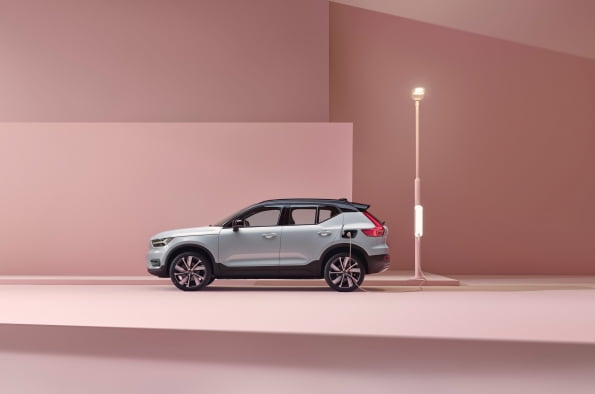
by gaukcars.com | Oct 2, 2024 | Blog
The fully electric Volvo XC40 Recharge has earned a TOP SAFETY PICK PLUS (TSP+) from the American Insurance Institute for Highway Safety (IIHS). The addition of this vehicle means Volvo Cars is the only brand to achieve TSP+ across its entire product range.
The Volvo XC40 Recharge is the first fully electric small SUV to earn the award, and adds to the record set last month for the most single-year TSP+ awards earned by any car maker since TSP+ honours began in 2013.
IIHS awards TSP+ status to vehicles that provide the highest level of safety. Volvo Cars received nine TSP+ awards in February, five in March and now one in April, totalling 15 awards for 2021.
The focus that Volvo Cars puts on safety systems as standard – including forward-collision warning and automatic emergency braking, combined with advanced pedestrian- and cyclist-collision prevention – sets the company apart.
“Regardless of bodystyle, engine or trim, every Volvo offers innovative protection in a crash,” said Anders Gustafsson, President and CEO of Volvo Car USA. “We are proud that IIHS has recognised this by awarding a Top Safety Pick Plus to every vehicle we produce today. No other company has been awarded this honour across all car lines.”
The fully electric Volvo XC40 Recharge joins the following vehicles earning a TSP+ award:
The following vehicles produced after September 2020 have been awarded the TOP SAFETY PICK PLUS award from IIHS as of 31 March 2021:
- Volvo S90
- Volvo S90 Recharge
- Volvo V90
- Volvo V90 Cross Country
The following vehicles have been awarded the TOP SAFETY PICK PLUS award from IIHS as of 31 March 2021:
They join the following vehicles awarded the TOP SAFETY PICK PLUS in February:
- Volvo S60
- Volvo S60 Recharge
- Volvo V60
- Volvo V60 Recharge
- Volvo XC40
- Volvo XC60
- Volvo XC60 Recharge
- Volvo XC90
- Volvo XC90 Recharge
The company’s vision is that no one should be killed or seriously injured in a new Volvo car. Volvo has consistently innovated new safety features, including the introduction of a speed cap in new cars, run-off road protection, and a new suite of safety sensors debuting in the Volvo XC40 Recharge.
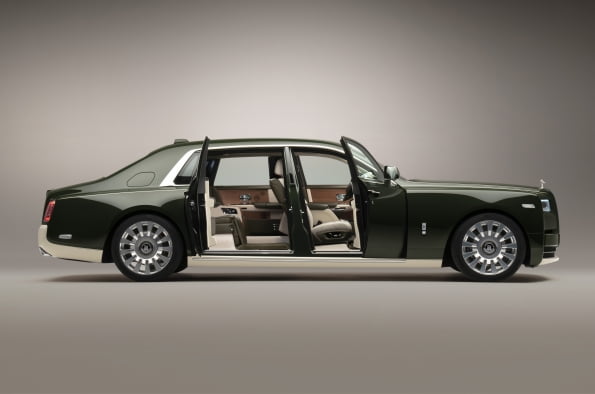
by gaukcars.com | Oct 2, 2024 | Blog
- Rolls-Royce Motor Cars creates magnificent Bespoke Phantom Oribe
- Exterior and interior designed and handcrafted hand-in-hand by bespoke specialists from Rolls-Royce and Hermès, using materials, techniques and know-how from both houses
- Commissioned by Japanese entrepreneur, art collector and supercar enthusiast Yusaku Maezawa
- Fully Bespoke two-tone MZ Oribe Green and cream exterior finish inspired by colours in the client’s world-class collection of ancient Japanese ceramics
- Envisioned by the client as a ‘land jet’ to complement a recently commissioned private aircraft
“This magnificent expression of our pinnacle product represents a landmark for Rolls-Royce Motor Cars, bringing together two houses with more than three centuries’ combined experience and heritage. It is the result of a deep, genuine collaboration between the Houses of Rolls-Royce and Hermès, in which designers, materials specialists and skilled craftspeople worked side by side to create a truly one-of-a-kind Phantom. It has been an extraordinary privilege to unite on such a creatively challenging, technically demanding commission and bring our client’s remarkable vision so beautifully to life.”
Torsten Müller-Ötvös, Chief Executive Officer, Rolls-Royce Motor Cars
“This unique Phantom is a fusion of East and West, ancient and modern, serenity and exhilaration. It was a great creative and cultural exchange working with Hermès; we learned a great deal from each other. It is always a pleasure when a client brings us a bold, clear and imaginative vision, and a great thrill to see it realised so perfectly.”
Michael Bryden, Lead Designer, Rolls-Royce Bespoke Collective
“We are really delighted to see this bespoke car come to life after a remarkable journey of creation and craftsmanship conducted hand in hand with both of our houses. We are proud to have contributed to creating a unique and contemporary expression of our client’s vision, thanks to our spirit of innovation, the quality of our materials and the know-how of our craftsmen, who have developed, amongst other things, unique stitching and upholstery techniques for the interior of the car and a hand painting technique for a bespoke gallery. It has been a real pleasure to work alongside the Rolls-Royce experts and to see how this car expresses all the values that Hermès cherishes every day.”
Axel de Beaufort, Design and Engineering Director, Hermès Bespoke Division
Rolls-Royce Motor Cars has co-created a magnificent Bespoke Phantom in a unique collaboration with Hermès.
Designed and handcrafted by a combined team of Bespoke specialists at the Home of Rolls-Royce at Goodwood, West Sussex, and Hermès in Paris, Phantom Oribe reflects the personality and passions of its owner, Japanese entrepreneur Yusaku Maezawa. The client envisioned the car as a ‘land jet’, bringing the serene exclusivity of private air travel to the road.
The car’s striking two-tone exterior matches the characteristic green and cream glazes of antique Japanese Oribe ware, of which Maezawa-san is a prominent collector. The upper part is finished in Oribe Green, a fully Bespoke colour created exclusively for the client; in an unusual move, Rolls-Royce has made the paint available for use on the client’s private jet the Phantom will be paired with. Developed over many months by specialists in the Surface Finish Centre at Goodwood, it perfectly captures the lustrous, deep-green glaze that characterises these 16th century ceramics. The effect is beautifully completed by the cream-white lower section.
The Oribe ware-inspired colourway harmoniously continues through the interior, created and realised through a true meeting of minds between Hermès designers and craftspeople in Paris, and the Rolls-Royce Bespoke Collective of designers, engineers and craftspeople at Goodwood in West Sussex. Together, they applied their shared expertise and ingenuity to ensure every individual component embodies the finest traditions of both houses.
The interior is finished predominantly in Hermès Enea Green leather, extending to details that include the immediate touch-points of the client; for example, the steering wheel, duchess handles, gear selector and the rotary controls for the motor car’s climate settings.
The Hermès leather flows around the upper instrument panel, interior pillars and parcel shelf. It also enrobes less visible surfaces including the glove compartment and luggage compartment lining, centre console, decanter stowage compartment and Champagne cooler. In a sign of the project’s truly collaborative nature, and the two makers’ mutual esteem, the glove compartment lid is embossed with the signature Habillé par Hermès Paris.
Delicate Hermès piping adorns the headrest cushions and calf supports of the rear seats, while soft Seashell White accents and matching lambswool floor mats create a sense of light and space throughout.
The interior is also replete with examples of Rolls-Royce Bespoke design and handcraftsmanship. Wooden speaker frets, for example, are formed by meticulously perforating the Open Pore Royal Walnut veneer applied to the doors, creating a seamless, textured aesthetic and delicate haptics. Open Pore Royal Walnut is additionally applied to the centre and rear consoles and picnic table backs; in another first for Rolls-Royce, the interior features Hermès ‘Toile H’ canvas on the door armrests, centre and rear consoles and, most notably, the signature headliner.
Hermès brings its distinctive equestrian heritage and innovative craftsmanship know-how to the car, with the leather upholstery created using stitching and edge-painting techniques originally employed by master saddlers. For Phantom’s Gallery, a feature unique to Rolls-Royce, that runs the length of the motor car’s fascia, Hermès commissioned an artwork based on a design by the celebrated French artist and illustrator Pierre Péron (1905–1988) who created many of the House’s iconic scarves. The work, inspired by the famous Hermès horse motif, is hand-painted on Open Pore Royal Walnut and is presented as though staged in an art gallery, behind glass.
Torsten Müller-Ötvös added, “This majestic and tasteful Rolls-Royce Phantom demonstrates what is possible when talented people from two of the world’s great houses work closely together alongside a far-sighted, inspirational client like Maezawa-san. It is a meeting of minds, expertise, visions and skill that represents the very best of our respective craftspeople and capabilities.”
CO2 EMISSIONS & CONSUMPTION.
NEDCcorr (combined) CO2 emission: 329-328 g/km; Fuel consumption: 19.5-19.6 mpg / 14.5-14.4 l/100km; WLTP (combined) CO2 emission: 356-341 g/km; Fuel consumption: 18.0-18.8 mpg / 15.7-15.0 l/100km
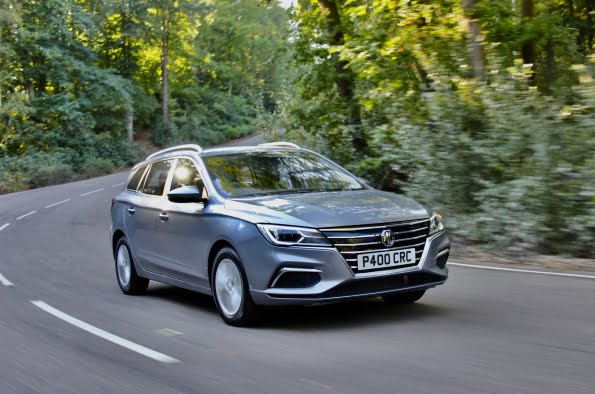
by gaukcars.com | Oct 2, 2024 | Blog
- Test drive a new electric MG and get £750 off
- 10-day test drive event allows no-obligation road tests for potential EV converts
- Simply book a test drive and download the voucher
- Almost a third of new MGs sold so far in 2021 are pure electric
- All new MGs come with 7-Year Warranty
The UK’s affordable EV pioneer, MG Motor, is offering an incredible £750 discount across its entire EV portfolio as part of a special 10-day event to celebrate the reopening of its dealerships.
The offer is in addition to any existing private retail offers.
Between now and April 26, 2021 anyone booking a test drive in the company’s MG ZS EV, MG5 EV or MG HS Plug-In Hybrid can download a £750 discount voucher, which can be used as money off the already outstanding value range of EVs if they place an order before the closing date.
MG’s Commercial Director, Guy Pigounakis, said: “We know there are a lot of people who have been waiting for dealerships to reopen so they can take a proper test drive before ordering a new car, especially those who are considering an EV but want to make sure it’s right for them before committing.
“At MG we want to make EVs as affordable as possible for everyone, so for anyone who takes a test drive in one of our electric or plug-in models between now and April 26 we’re giving them a further incentive in the form of a £750 thank you.”
The money off voucher is a further plus for anyone considering a plug-in MG, especially as the MG ZS EV and MG5 EV are both still eligible for the government’s £2,500 zero emissions car grant, which was modified last month so more expensive EVs no longer qualified.
MG has seen over 30% of its sales so far in 2021 through battery electric vehicles (BEVs), taking a 5.5% share of the entire BEV market in the UK. The brand also achieved its best ever sales month in March 2021, with 3,956 registrations and a record overall market share of 1.45%, a 28.1% growth over March 2020.
Overall, sales were up 44.6% compared with March 2020, against a whole of market sales increase of 11.5%.
MG currently offers three plug-in models in the UK – the established MG ZS EV, the game-changing All New MG5 EV and MG HS Plug-in Hybrid, all backed up by MG’s incredible 7 year warranty and fast-developing dealer network.
To find your local dealer, or to discover the high-tech, value-for-money range of cars on offer, please visit MG.CO.UK, or to download the voucher go to https://mg.co.uk/voucher/
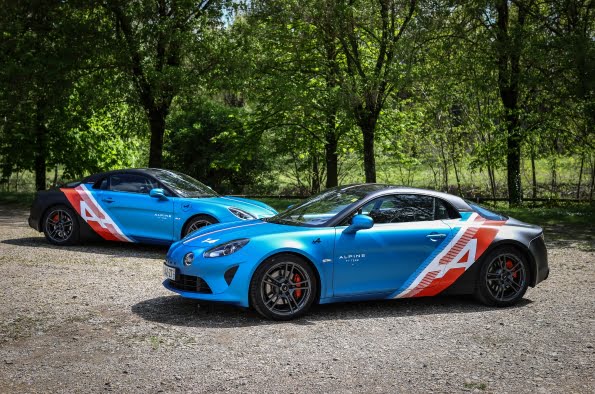
by gaukcars.com | Oct 2, 2024 | Blog
- Feature the Alpine F1 Team livery
- Alpine F1 Team drivers’ cars on European Grand Prix
The Alpine A110 trackside cars make their debut during the Emilia Romagna Grand Prix in Imola this weekend.
The Alpine A110 trackside cars will be used by Fernando Alonso and Esteban Ocon as their daily commuters on European Grand Prix.
From the bonnet, through the roof to the rear of the car, and like the A521, the Alpine A110 trackside cars feature Alpine’s historic racing colours: blue, white and red, synonymous with Alpine’s racing heritage and the colours of the French and British flags.
The A110 trackside cars are based on the A110S, the most potent version of the A110. With a power output of 292PS and a weight of 1114kgs, it features an impressive power to weight ratio of 262PS/Tonne (3,8kg/PS).
“When the A521 was presented, it was true joy to see the Alpine name on a Formula One car and it is just the same feeling today to see the Alpine F1 Team name on an A110”, said Laurent Rossi, Alpine CEO.
[1] Cars dedicated to the daily commuters on European Grand Prix.

by gaukcars.com | Oct 2, 2024 | Blog
- XCEED is a new blockchain solution for the European automotive industry to certify the compliance of vehicle’s components from design to production
- Developed by Groupe Renault, Faurecia, Knauf Industries, Simoldes, and Coşkunöz, in association with IBM
- The solution is now available to OEMs and automotive suppliers worldwide following a successful test at Renault’s Douai facility
- It will be first implemented at partner plants around Bursa in Turkey, Douai in France and Palencia in Spain
Groupe Renault, Faurecia, Knauf Industries, Simoldes, and Coşkunöz, in association with IBM, have signed a partnership contract for the deployment of XCEED (eXtended Compliance End-to-End Distributed), a blockchain based shared solution to trace the compliance of thousands of parts assembled in a vehicle in almost real time.
Today’s announcement follows the successful testing of the XCEED solution at Renault’s Douai plant, and will be deployed to partner plants around Bursa in Turkey, Douai in France, and Palencia in Spain. XCEED is now open to global OEMs and suppliers, regardless of size, throughout the supply chain.
A tool to meet the growing demand for transparency
XCEED improves responsiveness and efficiency during a time when regulations are becoming increasingly stringent. New market surveillance regulations came into force in September 2020, introducing enhanced regulatory controls for vehicles already on the market. Therefore, the entire production chain must adjust its structure to respond to the regulatory authorities within shorter timeframes.
An inclusive platform for the benefit of the European automotive industry
The ambition with XCEED is to provide a compliance and conformity traceability platform for the entire ecosystem of the European automotive industry. The platform is able to answer regulation and customer demand whilst bolstering European industrial competitivity and technological sovereignty. XCEED is designed to be inclusive for all the automotive industry players worldwide, from multinational companies to SMEs, offering access to a powerful, shared digital tool.
XCEED uses the blockchain to create a trusted network for sharing compliance information between parts/systems manufacturers, throughout the supply chain to end vehicle manufacturers. The XCEED platform will help ensure better and more efficient compliance management, while respecting each company’s confidentiality, intellectual property, and data ownership. It offers a unique but distributed platform across the automotive ecosystem and is a effective way for the industry to answer the growing requirements of regulation without multiplying complex data reconciliations. It will thereby benefit the European automotive industry by improving information exchange and increasing trust within and outside the ecosystem through automatic sharing, checks and alerts of data in near real time. The solution is the result of the initial action led by its founding partners and based on an open governance approach that welcomes new participants. It was founded with the input from DG Connect in the European Commission.
Based on “Hyperledger Fabric”, an open source blockchain protocol, XCEED has been developed in partnership with IBM. It intends to be deployed in a Hybrid Cloud architecture with multiple Cloud providers, including IBM Cloud, to allow each member to run on the Cloud platform of their own choice.
Launched in 2019, XCEED is designed and implemented in collaboration with leading automotive industry players – Groupe Renault, Faurecia, Knauf Industries, Simoldes and Coşkunöz – it is the fruit of collective intelligence and an adaptive agile methodology that marked an unprecedented multi-company approach to data-sharing and project management.
***
Quotes
Dirk Wollschläger, Industry General Manager, IBM
“Blockchain proved its value in providing a new way to manage traceability and compliance in the food industry, in supply chain and others. XCEED is our first initiative in the automotive industry that is targeting to tackle component compliance traceability at scale, leveraging the value and benefits of blockchain. At IBM, our goal is to provide this industry with appropriate business solutions, through our experience in building blockchain networks on hybrid multi-cloud solutions, to accelerate this journey and build trust for a global Industry-wide platform.”
Eric Jacquot, Group End to End Quality Director, Faurecia
“From the very beginning, Faurecia has played a key role within this innovative ecosystem and we are very pleased joining this initiative, a new way of working with our customer Groupe Renault which puts transparency, conformity and traceability at the heart of the supply chain. With this secure, transparent, and automated data sharing system we can trace and resolve issues rapidly, reinforcing compliance, conformity, and competitiveness. We are convinced that this cutting-edge project will change practices in our industry in the years to come.”
Odile Panciatici, Coordinator of the XCEED Project, Groupe Renault
“XCEED is a powerful tool for transforming the automotive industry by enabling operational excellence for the whole ecosystem, including smaller players that would not have been able to invest in such technology otherwise.”
Sylvie Janod, Automotive Market Director, Knauf Industries
“As a responsible automotive actor on the market, we decided to join XCEED project to increase our efficiency for ensuring our product traceability and conformity. XCEED is a unique opportunity to assess and adjust our systems and methods to improve our agility in a growing complex environment, and to improve hence our overall performance. XCEED is also fully aligned with Knauf Group’s digital strategy and Corporate Social Responsibility policy. With XCEED, we have a consistent approach between our shared expertise during a program concept phase until the end of vehicle’s life. We are glad to belong to an automotive community that will create value and contribute to increase transparency on the market.”
Jaime Sá, Board member, Simoldes
“When we understood the XCEED blockchain project would contribute to operational excellence by bringing simplicity, speed, transparency and compliance, involving all participants in the business supply chain we immediately decided to be part of this project as it fits with simoldes vision “juntos fazemos melhor” and our path to industry 4.0.”
Bariş Karaadak, General manager, Coşkunöz
“We are excited to be part of this pioneering digitalisation movement in the automotive sector,as aninitial partner company of the xceed project. With this global project, we believe that Coşkunöz will achieve a crucial step forward on its digitalisation vision journey.”
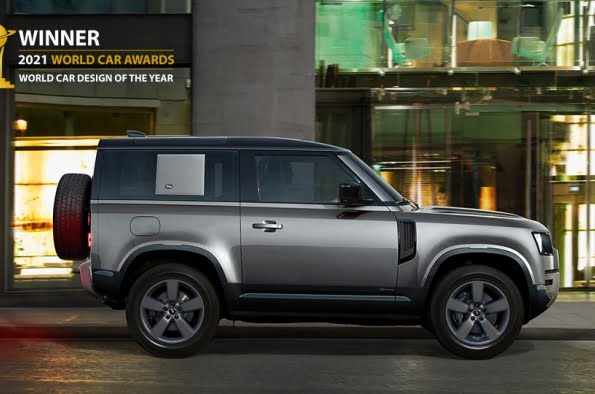
by gaukcars.com | Oct 2, 2024 | Blog
- Design prize: New Land Rover Defender named 2021 World Car Design of the Year as unstoppable all-terrain model beats shortlisted rivals to win coveted award
- Breadth of capability: Judges commend Defender’s distinctive design, all-conquering off-road capability, excellent on-road dynamics and 21st century practicality and connectivity
- Customer appeal: Line-up provides incredible choice, including 90 and 110 body designs, commercial Hard Top derivatives and powertrains ranging from a plug-in hybrid to a new V8
- Serial success: Latest prize means Defender has now won 53 international awards since launch, with Land Rover experiencing unprecedented demand for the 90 and 110
- Choose your model: 90 Hard Top priced from £35,360 OTR (ex. VAT), 90 from £44,825 and 110 starting at £46,215 in the UK. Configure yours at www.landrover.co.uk/Defender
The Land Rover Defender has been named 2021 World Car Design of the Year at the annual World Car Awards.
It’s the third time Land Rover has claimed the coveted prize following previous wins for Range Rover Velar (2018) and Range Rover Evoque (2012) and is the latest in a number of global awards for the rugged 4×4.
New Defender remains true to the pioneering spirit that has been a Land Rover hallmark for more than 70 years and redefines adventure for the 21st century. Iconic in name, shape and capability, it is available in a choice of body designs and can be personalised with a choice of four Accessory Packs to help owners make more of their world.
The World Car Design of the Year prize recognises the most outstanding new car of the last 12 months and rewards vehicles demonstrating the highest standards of technical innovation and design and that push established boundaries.
Prof. Gerry McGovern OBE, Chief Creative Officer, Jaguar Land Rover, said: “New Defender is influenced by its past but is not constrained by it and we are delighted it has been honoured with this award. Our vision was to create a 21st century Defender by pushing the boundaries of engineering, technology and design while retaining its renowned DNA and off-road capability. The result is a compelling 4×4 that resonates with customers on an emotional level.”
This year, all the contenders competing in the other four award categories were eligible for the World Car Design of the Year prize. A panel of seven automotive design experts reviewed the contenders to establish a shortlist of recommendations for the jurors’ final vote, made by the 93 international journalists that comprise the jury panel.
The design experts included Gernot Bracht (Germany – Pforzheim Design School), Ian Callum (United Kingdom – Director of Design, CALLUM), Gert Hildebrand (Germany – Owner Hildebrand-Design), Patrick le Quément (France – Designer and President of the Strategy Committee – The Sustainable Design School), Tom Matano (USA – Academy of Art University, Former Head of Design – Mazda), Victor Nacif (USA – Chief Creative Officer, Brojure.com and Design instructor, New School of Architecture and Design) and Shiro Nakamura (Japan – CEO, Shiro Nakamura Design Associates Inc.).
A distinctive silhouette makes the New Defender instantly recognisable, with minimal front and rear overhangs providing excellent approach and departure angles. Land Rover’s designers re-envisioned familiar Defender trademarks, giving the 4×4 a purposeful upright stance and Alpine light windows in the roof, while retaining the side-hinged rear tailgate and externally-mounted spare wheel that make the original so identifiable.
The stripped-back personality of the original Defender has been embraced inside, where structural elements and fixings usually hidden from view have been exposed, with the emphasis on simplicity and practicality. Defender 110 offers five, six or 5+2 seating configurations, while the 90 is capable of accommodating six occupants in a vehicle the length of a compact family hatchback.
Defender’s breadth of capability raises the threshold for off-road ruggedness and on-road comfort. Underpinned by Land Rover’s strong D7x aluminium platform – the brand’s stiffest ever body structure – advanced all-terrain technologies and state-of-the-art powertrains deliver unstoppable capability. Its carefully honed handling delivers a rewarding drive and first-class comfort across all terrains, and the experts at Euro NCAP awarded the Defender a maximum five-star safety rating.
A choice of advanced Ingenium petrol and cleaner diesel engines ensure Defender has the power, control and efficiency for any environment, while a Plug-in Hybrid Electric Vehicle (PHEV) powertrain provides silent EV-only progress of up to 27 miles*. In addition, the new 525PS Defender V8 combines characteristic Land Rover capability with incredible performance and bespoke chassis settings for heightened driver engagement.
The Defender family now encompasses the Defender 90 and Defender 110, as well as the 90 and 110 Hard Top commercial variants. Since its launch, Defender has won more than 50 global accolades, including Top Gear’s 2020 Car of the Year, MotorTrend’s 2021 SUV of the Year and Autocar’s Best SUV 2020.
*All fuel consumption and CO2 data quoted above relates to Official EU-WLTP TEL Combined Test Figures for five-seat derivatives. The figures provided are as a result of official manufacturer’s tests in accordance with EU legislation. For comparison purposes only. Real world figures may differ. CO2 and fuel economy figures may vary according to factors such as driving styles, environmental conditions, load and accessories.
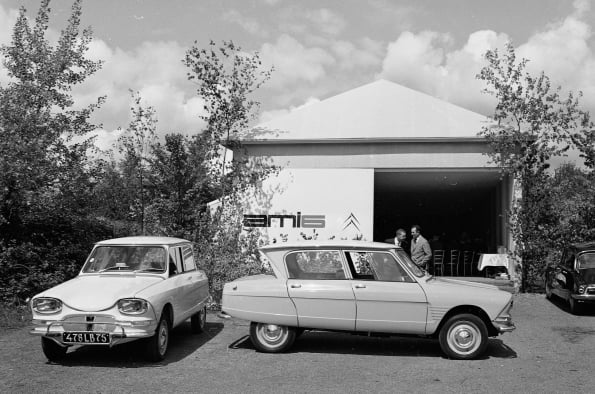
by gaukcars.com | Oct 2, 2024 | Blog
- Citroën celebrates 60 years of AMI 6, first revealed on 24 April 1961.
- Citroën AMI 6 was the first car manufactured at the newly opened Citroën plant in Rennes, France.
- Over one million AMI 6 models were sold up until 1971, 551,880 were the estate version.
- AMI 6 completed Citroën’s range, which at the time consisted of the iconic 2CV, ID and DS.
- With its unforgettable inverted rear window, AMI 6 embodied the 60s with its ‘Z-Line’ design.
- Discover more about AMI 6 at Citroën’s virtual museum, Citroën Origins: www.citroenorigins.com
Citroën is celebrating 60 years of the iconic AMI 6, which was first revealed on 24 April 1961.
With its compact dimensions and spacious interior, the vehicle went on to be a great success for the brand with over one million models sold, half of which were the capacious estate version that arrived in 1964. At launch, the new AMI 6 completed Citroën’s vehicle line up, joining the iconic 2CV, ID and DS models. It presented a shape and style that many perceived as surprising in the automotive sector at the time.
The original design was 3.87m long and 1.52m wide, which later evolved to include rear sliding windows (from 1962), and an enhanced Club trim (from 1967). AMI 6 was originally priced from just 6,550 French Francs.
After designing Traction Avant, 2CV and DS with the Citroën design team, Flaminio Bertoni was asked to lend his talent to the design of a middle-range car, known as the ‘AM Project’. AMI 6 was the end result. Bertoni described the car to his friends and family as his masterpiece – as the model was developed without the creative input of anyone else, Bertoni was able to fully express himself with the design of the vehicle.
For AMI 6, Bertoni had the bold idea of inverting the rear window, meaning that it would remain clear when it rained. It also allowed for a well-proportioned boot with a traditional boot lid. The design also boasted spacious rear seats, whilst retaining compact dimensions. AMI 6 had a dual-cylinder 602cm3 engine, capable of 22hp at 4,500 rpm, the same as seen in the 2CV. In a first at the time, the car also had large rectangular headlights at the front. The model displayed a strong character, with a sloping bonnet, the pagoda-style roof and panels highlighted with clearly embossed lines – some onlookers even described the car as being in a “baroque style”.
The interior of AMI 6 was inspired directly by that of the iconic DS, which was the gold standard at the time. From its single-spoke steering wheel and stylish door handles, to its dashboard controls and seats, everything indicated that the model was a top-of-the-range Citroën. The on-road handling and compliant ride – inherited from the famous suspension setup of the 2CV – was received positively by customers and the press.
From its creation, in keeping with the Citroën spirit, AMI 6 has been regarded fondly as an original and innovative car. Its die-hard fans continue to maintain a particular interest in the Club versions of the model that came with four headlights and white trim. They were sold from September 1967. The iconic advertising slogan for AMI 6 was “the least expensive comfort mile in the world”.
The turning point for the model came in late 1964, with the arrival of a small estate version with a 320kg payload that was designed by Flaminio Bertoni’s assistant, Henri Dargent, as well as Robert Opron, who would become Bertoni’s successor after he passed away in 1964. The estate version would go on to boost sales and overtake the saloon in terms of popularity, something that has rarely happened in automotive history.
The design of the estate version offered a great amount of space for a leisure vehicle in this category, along with easy and convenient accessibility. It was a versatile model, providing just as much comfort to a family travelling on a trip, as it would for a professional using the car for business needs. In 1966, AMI 6 was named in France as the nation’s favourite car of the year.
Production of the saloon ended in March 1969, six months before production of the estate ended. The model made way for the new AMI 8 that featured a more conventional rear design. Eventually AMI 8 handed the baton on to Citroën Visa in 1978.
CITROËN AMI 6, DID YOU KNOW?
- The name AMI 6 comes from a phonetic combination that refers to the name of the design project (AM vehicle), the title “Miss”, and the Italian word for friend, “amici”, which is considered to have been inspired by Bertoni’s Italian heritage.
- Yvonne de Gaulle, wife of General de Gaulle, drove an AMI 6.
- The vehicle inaugurated the Citroën plant in Rennes-La-Janais on 10 September 1960. The factory was still under construction at the time and it was a little over a year before production began on the site.
- A rally named “Le Tour de Gaule d’Amisix” was held by Citroën, setting off from Rennes-La-Janais on 19 January 1966, with two standard AMI 6 estate models to demonstrate the endurance and qualities of the model. When the team crossed the finish line, 23 hours and 11 minutes later they had covered 1,291 miles at an average speed of 55.7 mph.
- In June 1963, AMI 6 was launched in America. The export model adopted four round headlights and reinforced bumpers.
- The model was produced in Paris from 1961 to 1963 and Rennes-La-Janais from 1961 to 1969, marking the brand’s first major decentralisation from Paris. The model was also produced in Forest, Belgium from 1961 to 1969, and Catila, Argentina, where cars were shipped in parts to the plant to be assembled on site until 1971.
- In total 1,039,384 AMI 6 vehicles were produced, of which 483,986 were saloons (from April 1961 to March 1969) and 551,880 were estates (from October 1964 to September 1969). An additional 3,518 vehicles were sold in ‘Enterprise’ specification, which was a two-seater service estate with both glazed and panelled versions available.
- On the last production AMI 6 models, a small knob that controlled a rheostat was introduced to allow adjustment for the brightness of the dials.
- Miniatures of the model can be purchased as gifts from the Citroën Lifestyle store. The AMI 6 1967 saloon in Typhoon Grey can be bought as a 1:43 miniature for €37 at the following Link
Citroën’s virtual museum – Citroën Origins – offers an immersive experience in 3D, offering a closer look at AMI 6 and 80 other iconic Citroën models. To discover more, please click: www.citroenorigins.com
To discover more about the Citroën Lifestyle store and the items for sale, go to: www.lifestyle.citroen.com
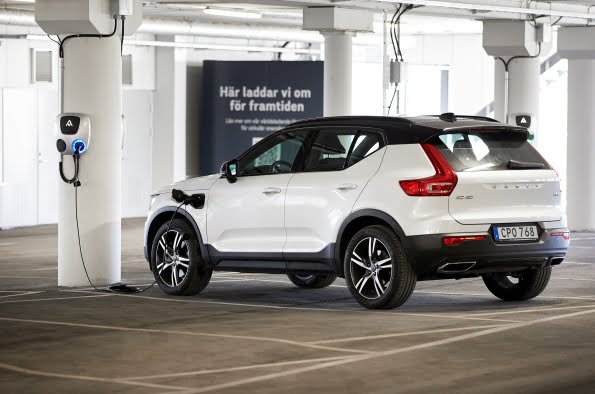
by gaukcars.com | Oct 2, 2024 | Blog
Volvo Cars aims for annual savings of SEK 1 billion and reductions of 2.5 million tonnes in carbon emissions from 2025 using circular business principles.
Supporting the company’s long-term goal of becoming a circular business by 2040, Volvo Cars will create closed material loops for emission-heavy materials such as steel and aluminium. It will also remanufacture, repair, reuse and refurbish parts.
“Volvo Cars has one of the most ambitious climate plans in the car industry, and if we are to reach our goals, we need to embrace the circular economy,” said Anders Kärrberg, Head of Global Sustainability at Volvo Cars. “This requires us to rethink everything we do and how we do it. We put a strong focus on integrating sustainability into the way we think and work as a company, and we are making it as important as safety has always been to us.”
To become a circular business by 2040, Volvo Cars is convinced that every part in its cars should be designed, developed and manufactured to be used and reused, either by the company or its suppliers.
By focusing on resource efficiency and retaining the value created in materials and components for as long as possible during the lifecycle, the company wants to optimise the use of materials, components and cars, and eliminate waste in the process. This will lead to financial savings and new revenue streams, as well as significantly lowering its environmental impact.
Volvo Cars already remanufactures parts such as gearboxes and engines to make better use of materials and reduce emissions. In 2020, around 40,000 parts were remanufactured, saving nearly 3,000 tonnes of CO2 emissions. By 2025, Volvo Cars aims to more than double its remanufacturing business. To ensure that valuable material can be kept in circulation, the company recycled 95 per cent of its production waste last year. This included 176,000 tonnes of steel, avoiding the generation of nearly 640,000 tonnes of CO2.
In 2020, Volvo Cars became a member of the Ellen MacArthur Foundation, which is the world’s leading circular economy network.
“We welcome Volvo Cars’ commitment to design, develop and manufacture its products to be used and reused. It is very encouraging to see the link being made between circular solutions, business strategy and a reduction in carbon emissions,” said Joe Murphy, Network Lead at the Ellen MacArthur Foundation. “The circular economy offers companies a framework for viable long-term growth that also benefits society and the environment.”
New business models such as giving electric vehicle batteries a second life are important from a circular business perspective. By using batteries in energy storage applications outside of cars, new revenue streams and cost savings can be realised while also extending the batteries’ lifecycles.
Together with suppliers and partners, Volvo Cars is exploring the potential in second-life applications for its high-voltage batteries. A current example is the collaboration with BatteryLoop, a company within the Swedish Stena Recycling Group that reuses batteries from the automotive industry.
BatteryLoop and Volvo Cars use batteries from electrified Volvo cars for a solar-powered energy-storage system. Starting in April, the system will power charging stations for electrified cars and electric bikes at Swedish hygiene and health firm Essity’s business centre outside of Gothenburg.
In a similar project, Volvo Cars, Comsys AB, a Swedish cleantech company, and Fortum, a European energy company, are engaged in a commercial pilot project. It aims to increase supply flexibility at one of Fortum’s hydropower facilities in Sweden while contributing to a second life for electric vehicle batteries at the same time. Battery packs from Volvo plug-in hybrid cars will serve as a stationary energy storage unit, helping to supply so-called ‘fast-balancing’ services to the power system.
Through these and other projects, Volvo Cars is investigating how batteries age when reused in second-life applications that have significantly less aggressive cycling compared to in-car use. They also allow the company to gain more knowledge about the commercial value of batteries after use in cars and identify potential future revenue streams.
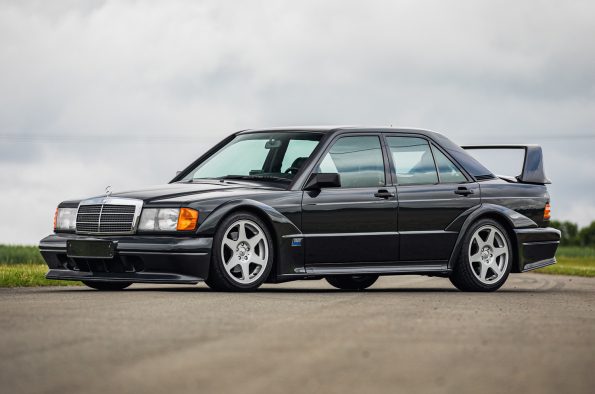
by gaukcars.com | Oct 2, 2024 | Blog
- The London Concours has announced its latest class – this time celebrating performance ‘Youngtimers’ from the ‘80s and ‘90s
- On display are nine of the best German performance Youngtimers with high top speeds, big engines and outrageous body kits
- Celebrating the homologation specials, the class includes the Mercedes 190E 2.5-16 Evo II and the Audi Sport Quattro – with appearances from tuners Alpina, Brabus, Hartage and Koenig
- The fifth annual London Concours will take place from 8-10 June, taking in a VIP Preview Day, Style Edition and Supercar Day
- Tickets are on sale now at londonconcours.co.uk/tickets, from just £25
The London Concours has revealed its latest class, celebrating ‘The Youngtimers’.
The class will appear at the Honourable Artillery Company HQ from 8-10 June, and will celebrate the German performance youngtimers of the ‘80s and ‘90s with their high top speeds, huge engines and outrageous body kits.
Among them, homologation specials, including the Mercedes 190E 2.5-16 Evo II, designed for the German Touring Car series, or Deutsche Tourenwagen Masters (DTM), and an Audi Sport Quattro, homologated for ‘Group B’ rallying. Both cars create immediately recognisable silhouettes with their prominent rear wings.
Alongside the homologation specials will be a feast of ‘80s and ‘90s German nostalgia. The class also includes the best of the fast-tuned saloon and estate models of the era. The 190E and Sport Quattro will be joined by two models from fast estate car royalty, the Audi RS2 Avant, and the Alpina B10 V8 S Touring.
The notion of the fast estate car very much came to life in the late ‘80s and early ‘90s – and the Audi RS2 was one of the first of the breed. The RS2 was the first Audi ‘RS’ product, and it quickly became the perfect embodiment of the breed – co-developed with Porsche, the car featured a 2.2-litre five-cylinder turbocharged engine producing 315bhp, which was fed to the wheels by Audi’s legendary quattro four-wheel drive system. But crucially, the car also featured plenty of space for carrying people and luggage.
Set alongside it, will be one of the rarest BMW M3s ever made. The BMW E30 M3 Roberto Ravaglia Edition had a super limited production run of just 25 cars, all of which were made exclusively for the UK market. Also a homologation car for DTM, the ‘Ravaglia’ name comes from Roberto Ravaglia a very successful Italian DTM driver with BMW in the late ‘80s and early ‘90s.
Also on display two models from Mercedes’ back catalogue that were tweaked, tuned and reimagined by Brabus and Konig. The Mercedes 300CE ‘widebody’ by Brabus and the Mercedes 560SEC ‘widebody’ by Koenig, feature two of the more exaggerated body kits on display at the show. At a time when excess was everything, Brabus and Konig took two relatively ordinary German cars, and made them into something very unique.
These seven cars are part of a nine-car line-up of the most significant cars from the German performance youngtimer era, which itself is one of eleven classes and features that will grace this year’s London Concours, hosted 8-10 June at the Honourable Artillery Company HQ.
Andrew Evans, London Concours Director, said: “Among our world-class line-up of eclectic vehicles, we’ve never before celebrated this particular era of extraordinary German performance. During the ‘80s and ‘90s in Germany, the motoring world was alive with motorsport, and the youngtimers class incorporates some of those exciting homologation specials that we all lusted after. But more than that, we also celebrate the tuners such as Alpina, Brabus, Koenig and Hartage – that really came to embody that era of motoring excess.”
Previously held over two days, the London Concours 2021 shifts to a three-day event to capitalise on visitor demand for more luxury brand content – from jewellery to bespoke suits – and modern supercars. The three days will be a VIP Preview Day, Style Edition and Supercar Day. At the heart of each day will remain the collection of nearly 100 rare and iconic luxury cars of all ages that has quickly cemented London Concours as one of the UK’s top motoring events.
The London Concours takes place from 8-10 June 2021. Tickets are available from londonconcours.co.uk/tickets
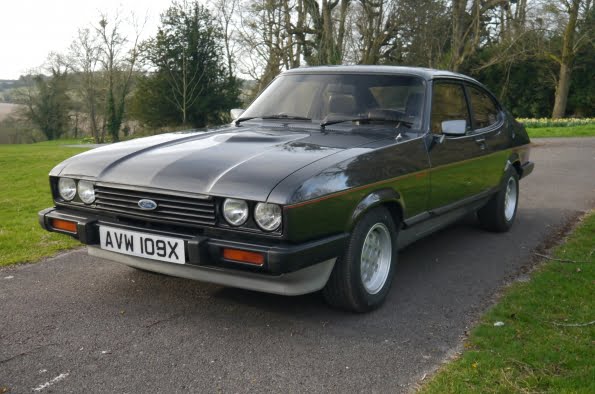
by gaukcars.com | Oct 2, 2024 | Blog
- One of the rarest Ford Capris ever made is being sold this month
- Car & Classic is auctioning a one-off factory Capri, built specifically for Henry Ford II to use whilst in the UK
- Commissioned by Ford’s Design Department, its bespoke specification includes automatic transmission, wider, full leather seats and interior trim
- Prepared with additional care at the factory, including extra layers of paint, and then finished at Ford’s legendary SVE department
- Key part of Ford history featuring in magazine and marque books
- Available 35 years after sales of the Capri ended, this special car’s online-only auction starts on 23rd April with an estimate of £25,000 – £35,000
- www.carandclassic.co.uk/auctions
A 1981 Ford Capri 2.8 injection created specifically for Henry Ford II will be auctioned on April 23rd by online specialists Car & Classic.
It is one of three special Fords created for Henry Ford II and this Capri was specifically for him to use when traveling in the UK.
Starting life being hand-picked off the Cologne production line, this very special Capri then underwent a transformation that included additional layers of paint, stricter quality control and comfort features such as a C3 automatic transmission and wider, leather trimmed seats and door cards.
Grandson of founder Henry Ford, Henry Ford II was a key driver of Ford’s Total Performance programme that led to projects including the Ford GT40 and Mustang that were a catalyst for Ford’s success at the time. It was critical that Henry Ford II was available for dealer and supplier visits in the UK, hence his need for a bespoke Capri during that time.
The work on AVW109X was undertaken by Ford’s SVE division at Dunton before being delivered to Turville Grange, the Ford family’s home in the UK. It was enjoyed by the family until 1983 when it was purchased by Ron Mellor who was then Head of Ford Product Development. After three years, he put a for sale sign on the staff notice board, leading to Alan Jarman, a designer at Ford, buying the car to commute from Torquay to Dunton. In 1993 Jarman sold the car to Leslie Garner who kept it until April 2007 when the next owner, recommissioned the car with many new original Ford parts.
Now showing 68,958 miles on the odometer, the Capri has only covered around 6,800 miles in the last 28 years. Fresh from a comprehensive refresh this February 2021, restoring it to its full glory, it’s now ready to be enjoyed once more.
“Fast Fords are always highly sought after but this Capri is much more than that,” says Chris Pollitt, head of editorial at Car & Classic. “Specifically prepared by the legendary SVE department for one of the most influential people in the history of Ford and then subsequently enjoyed by other key members of the company, it is a widely appreciated, documented and renowned part of the Ford story.”
The seven-day online auction will start from April 23rd on Car & Classic, with the special Capri’s estimated to be sold for £25,000 – £35,000. It comes to the sale with a vast array of history including old invoices, MOTs as well as copies of its time in Classic Cars Magazine this February and in Steve Saxty’s book – Secret Fords, which came out in 2020.










